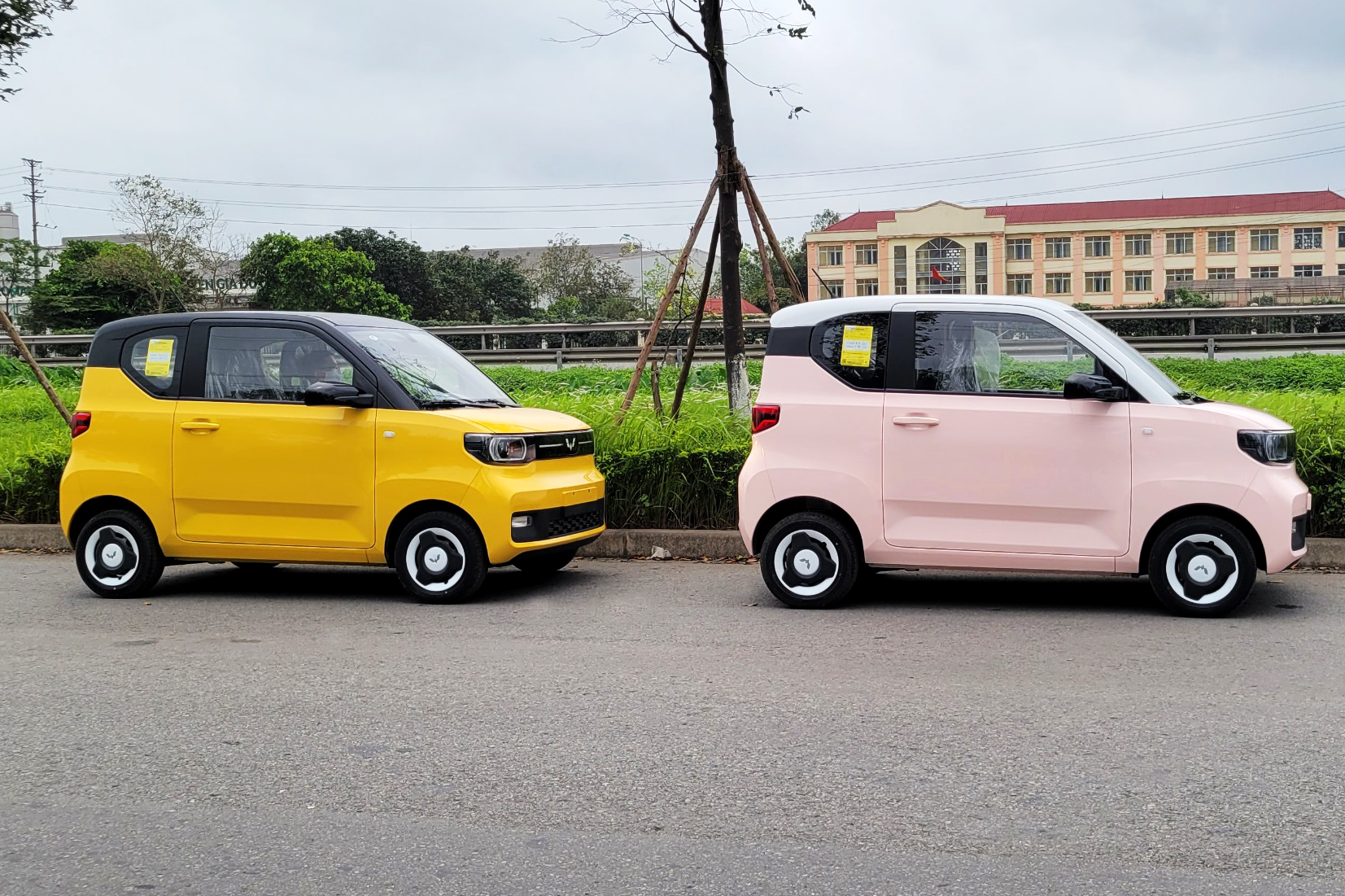The decline in the A-segment car market in Vietnam
Until a few years ago, cheap models such as Kia Morning and Hyundai Grand i10 were considered the “king of sales” with about 20,000 units sold each year, being the “golden egg-laying chicken” bringing amazing economic efficiency to the big car manufacturers.
In recent years, these models are no longer attractive to customers like before, sales have decreased significantly. Among them, Kia Morning sold 1,467 units in 2024, while Hyundai Grand i10 performed better with sales of over 7,000 units due to having many variants, according to data published in the Người lao động newspaper.

Kia Morning, Hyundai Grand i10 currently have significantly lower sales than in their prime.
According to sales reports from the Vietnam Automobile Manufacturers Association (VAMA) and TC Motor, the sales of A-segment cars also decreased sharply in the first month of 2024. The total sales of small, cheap cars reached 632 units, a 59% decrease compared to the figure of 1,526 units in the last month of 2023.
In the small urban car segment, there are now only three models: Hyundai Grand i10, KIA Morning, and Toyota Wigo with quite low sales.
Previously, models such as VinFast Fadil and Honda Brio have gradually withdrawn, leaving a large gap in the segment.
The cheapest, why is the A-segment car losing its leading position in sales?
There are several reasons leading to the decrease in sales of A-segment cars in Vietnam.
Changing consumer needs: More focus on safety and convenience
The main reason leading to the decrease in purchasing power of cheap car models, which were previously favored by customers, is the change in consumer needs and psychology, shifting towards prioritizing higher-end versions or models.
According to the Người lao động newspaper, Ms. Nguyễn Thị Ngân Hà, Sales Director of Phuong Nguyen Trading and Service Co., Ltd., said that 70% – 80% of customers currently tend to choose high-end versions due to their growing concern for their own and their family’s safety. Many car manufacturers also believe that consumers no longer see cars as convenient means of transportation, but require higher levels of safety and convenience.
In the same Người lao động newspaper, Mr. Thái Quang Huy, Sales Director of Saigon Gia Định Auto Services Joint Stock Company, shared: “Customers are increasingly concerned about the safety of the car as their top priority, and then the cost. Many people with around 300 – 400 million VND will choose to buy a used high-end car instead of a new cheap car.”
In an exchange with Pháp luật TPHCM newspaper, auto expert Nguyễn Minh Đồng said that users’ preferences are gradually shifting towards larger, more versatile, and more convenient cars. “Small cars are harder to sell than big cars because consumers prefer comfort and safety. Many people using ride-hailing services also don’t like small cars, so the demand keeps decreasing,” Mr. Đồng commented.
The emergence of newer models with competitive prices
The low price has made the A-segment car segment the top choice for buyers with business needs or first-time car buyers. However, this advantage is gradually being eroded by the launch of a series of new models in the neighboring segments such as A-segment SUVs (such as Kia Sonet or Toyota Raize), which have relatively accessible prices but impress with their high ground clearance and powerful engines.
As the price advantage gradually fades away due to the price range of competitors in nearby segments, small A-segment cars are losing market share in the Vietnamese market year by year.

New high-riding A-segment car models recently put pressure on the sales of A-segment hatchback cars.
The wave of cheap mini electric cars
The wave of cheap mini electric cars is also a major concern for A-segment models. In February 2023, TMT Motors confirmed it would assemble and distribute the Wuling HongGuang MiniEV mini electric car in the Vietnamese market.
In China, Wuling HongGuang MiniEV is listed with a starting price of $4,766, equivalent to customers paying less than 120 million VND to own one. In Thailand, this model is priced at around 250 million VND.

Mini electric cars may be the next nightmare for the A-segment car group in the Vietnamese market. Photo: TMT Motors.
VinFast also plans to produce a small electric car model with a price of approximately $10,000-$12,000 in the future. If this model is realized while the price remains the same, Vietnamese consumers will have another option for a small electric car with a price of only about 280 million VND.
According to Reuters, BYD also expressed its desire to open an electric car manufacturing plant right in Vietnam, in addition to another plant being built in Thailand.
With attractive prices, mini electric car models may become a nightmare for the A-segment car segment in the Vietnamese automobile market.
Shifts in the domestic brand landscape
In mid-July 2022, VinFast officially announced the cessation of gasoline-powered car sales after the remaining Lux and Fadil models were all sold out. This means that Vietnamese customers can no longer order VinFast Fadil – a very successful A-segment car model that has often become the “king of sales” in previous months. This also marks the decline in sales of small A-segment cars since then.
It can be seen that the decrease in sales of A-segment cars such as Kia Morning and Hyundai Grand i10 in Vietnam reflects changes in consumer tastes and financial capability, as well as the development of the auto market, in which new car models and electric cars are increasingly dominating.









































